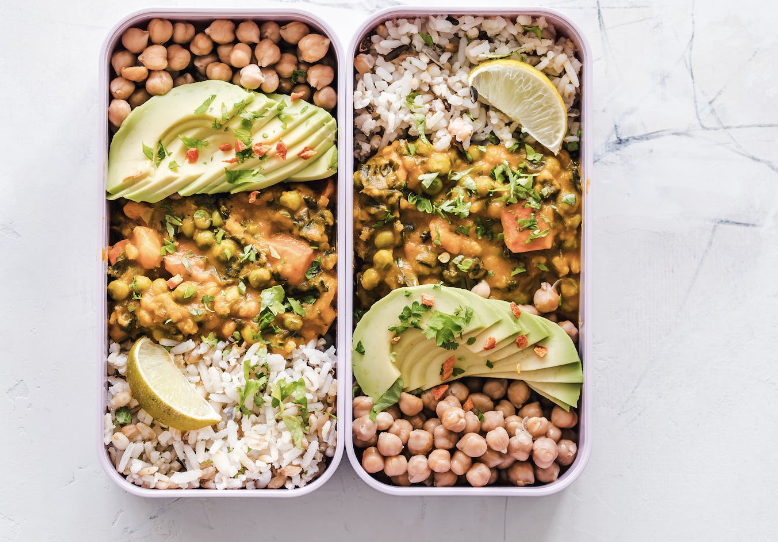Plant-based eating has become increasingly popular over the years, as more people become aware of the health and environmental benefits of a vegan diet. But transitioning to a plant-based diet can be daunting, especially if you’re used to a diet that includes meat and dairy products. In this guide, we’ll provide you with all the information you need to make the switch to a vegan diet.
Why Go Plant-Based?
There are many reasons why people choose to adopt a plant-based diet. Here are just a few of the most common:
Health Benefits: A vegan diet is associated with lower rates of heart disease, high blood pressure, type 2 diabetes, and some types of cancer. Plant-based foods are also generally lower in saturated fat and cholesterol than animal products, which can help you maintain a healthy weight and reduce your risk of chronic diseases.
Environmental Sustainability: Livestock farming is a major contributor to greenhouse gas emissions, deforestation, and water pollution. By eating a plant-based diet, you can reduce your carbon footprint and help protect the environment.
Animal Welfare: Many people choose to adopt a vegan diet because they are concerned about the welfare of animals. The conditions in which many farm animals are kept can be cruel and inhumane, and many vegans believe that it’s wrong to use animals for food.
Personal Ethics: Some people adopt a plant-based diet for personal or ethical reasons, such as a desire to live a more compassionate or mindful life.

Making the Transition
Transitioning to a plant-based diet doesn’t have to be difficult, but it does require some planning and preparation. Here are some steps you can take to make the switch:
Start Slowly: You don’t have to go vegan overnight. Instead, try incorporating more plant-based foods into your diet gradually. Start by adding more fruits, vegetables, whole grains, and legumes to your meals. You can also try meatless versions of your favorite dishes, such as veggie burgers, tofu stir-fry, or lentil soup.
Educate Yourself: Learn about the nutritional requirements of a vegan diet, including sources of protein, calcium, iron, and vitamin B12. You may also want to read up on vegan cooking techniques, such as how to cook tofu or tempeh, or how to make vegan versions of your favorite dishes.
Plan Your Meals: Plan your meals in advance to make sure you’re getting all the nutrients you need. You can also try meal prepping, which involves preparing several meals in advance and storing them in the fridge or freezer for later.
Experiment with New Foods: Trying new foods can be a fun and exciting way to explore plant-based eating. Try exotic fruits, such as dragon fruit or jackfruit, or experiment with different types of plant-based milk, such as almond or oat milk.
Seek Support: If you’re struggling with the transition, seek support from friends, family, or online communities. You can also find support from a registered dietitian, who can help you plan your meals and ensure that you’re getting all the nutrients you need.
Common Nutritional Concerns
One of the biggest concerns for people transitioning to a vegan diet is whether they will get all the nutrients they need. Here are some common nutritional concerns, and how to address them:
Protein: Plant-based sources of protein include beans, lentils, tofu, tempeh, nuts, seeds, and whole grains. Aim to include protein-rich foods in each meal.
Calcium: Plant-based sources of calcium include leafy greens, such as kale and collard greens, as well as fortified plant milk, tofu, and calcium-fortified orange juice.
Iron: Plant-based sources of iron include leafy greens, legumes, whole grains, nuts, and seeds. Pairing iron-rich foods with vitamin C-rich foods, such as citrus fruits or bell peppers, can also help improve absorption.
Vitamin B12: Vitamin B12 is found almost exclusively in animal products, so it’s important to supplement or eat fortified foods, such as plant milk, nutritional yeast, or meat substitutes.
Omega-3 Fatty Acids: Omega-3 fatty acids are important for heart and brain health. Plant-based sources of omega-3s include flaxseeds, chia seeds, hemp seeds, walnuts, and algae-based supplements.
Eating Out and Socializing
Eating out and socializing can be challenging for those following a plant-based diet, but there are ways to navigate these situations:
Research Ahead: Before dining out, research the restaurant’s menu online or call ahead to ask about vegan options. Many restaurants now offer vegan or vegetarian options, or can make substitutions to accommodate dietary restrictions.
Bring a Dish: If you’re attending a potluck or social gathering, consider bringing a plant-based dish to share. This ensures that you’ll have something to eat, and may also introduce others to delicious vegan foods.

Be Prepared: Keep vegan snacks on hand for when you’re on the go, such as nuts, seeds, fruit, or protein bars. This can help you avoid temptation and stay on track with your plant-based eating goals.
Final Thoughts
Transitioning to a plant-based diet can be a rewarding and fulfilling journey. By starting slowly, educating yourself about nutrition, and seeking support, you can make the switch to a vegan diet with confidence. Remember to prioritize whole, nutrient-dense foods, and to experiment with new plant-based foods and flavors. With a little planning and preparation, you can enjoy the health and environmental benefits of plant-based eating.



